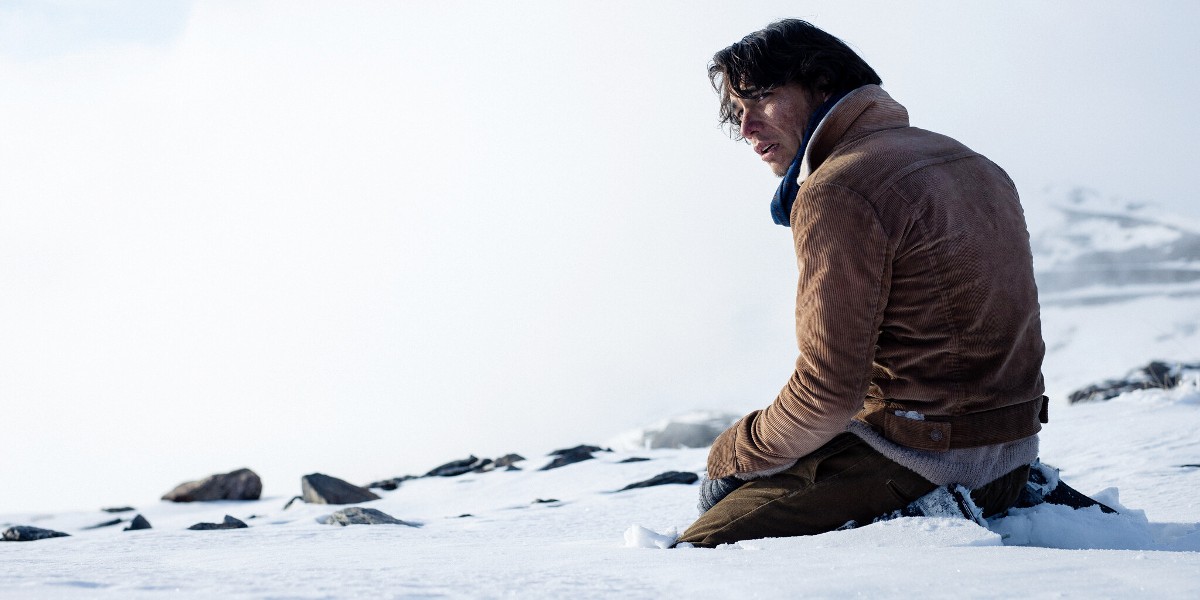It’s Important To Remember That ‘Society of the Snow’ Isn’t Just a Movie

After a short theatrical run, Society of the Snow is now streaming on Netflix. As viewers delve into one of the streamer’s most harrowing movies, they will likely want to learn more about the horrific true story that inspired the film.
Society of the Snow is a survival film directed by J. A. Bayona (The Impossible, Jurassic World: Fallen Kingdom). It’s no surprise that the film has been topping Netflix’s charts, considering it has already made the shortlist for Best International Feature Film at the 96th Academy Awards. The movie takes place in 1972 and follows the agonizing journey of a band of plane crash survivors. After miraculously surviving a Uruguayan plane crash, a few survivors find themselves stranded in the Andes, where they face starvation, exposure, and avalanches. Despite the obstacles they face, they are determined to defy all the odds and make it out of the Andes alive.
Society of the Snow is equal parts harrowing and inspirational. It is definitely not for the faint of heart, as what these survivors go through is quite unimaginable. At the same time, it’s hard not to be inspired by such an intense display of human resilience and endurance. While fretting over the plight of these survivors, you’ll also feel awe at the power of the human desire to live. However, you’ll likely be wondering if such an extraordinary tale could really be true.
The true story behind Society of the Snow

Society of the Snow is, indeed, based on a true story. It dramatizes the story of Uruguayan Air Force Flight 571. As the film depicts, this flight set off on its ill-fated journey on October 12, 1972. It held 45 passengers and crew members, including 19 members of a Uruguayan rugby sports club and their families. They were flying from Montevideo, Uruguay, to Santiago, Chile, for a match. However, bad weather and a co-pilot’s mistake led to things going terribly wrong.
Co-pilot Lieutenant-Colonel Dante Héctor Lagurara mistakenly believed they had reached Curicó, Chile, even though his instruments should have told him otherwise. He started to land prematurely, and before the plane could correct its course, it struck a mountain and crashed in the heart of the Andes. The crash was so severe that 12 passengers died immediately upon impact, with others passing shortly afterward due to injury and freezing temperatures. Meanwhile, the remaining survivors were in bad shape. One of them, Nanda Parrado, recounted that he fell into a coma for three days after the crash before waking.
The survivors shared a small supply of food salvaged from the crash and found a way to melt snow into drinking water. At first, it seemed all they had to do was hunker down until rescuers found them. However, rescuers weren’t coming for them. Due to the white airplane wreckage blending into the snow, authorities couldn’t locate the crash site. After eight days of searching, the rescue was called off, with the assumption that no one could’ve survived the crash plus multiple days in such harsh conditions. The original survivors actually heard their rescue mission being called off from a radio that survived the crash. Instead of sinking into despair, the survivors decided that they were going to get themselves out of the Andes.
How did the Flight 571 passengers survive?
As the days increased, they were forced to take desperate measures, including resorting to cannibalism. This story detail was the subject of much scrutiny and the survivors have since opened up about dealing with the media’s horror and questions regarding this desperate act of survival. However, they had no other choice. They resorted to this in the most humane way possible, only agreeing on it after long discussions. They even made pacts that, if they died, they would offer their bodies as food to the remaining survivors. Still, conditions worsened, with avalanches and hunger leaving just 19 survivors. Finally, the survivors decided they needed to take action. Parrado and fellow survivor Roberto Canessa decided to hike across the mountains in search of civilization.
Against all odds, Parrado and Canessa survived a ten-day hike in extreme conditions with no mountaineering gear while suffering from starvation and altitude sickness. They hiked all the way to Chile and, on December 20, made contact with a farmer. It wasn’t long before police, reporters, and rescue helicopters arrived on the scene. After hearing Parrado’s story, rescuers boarded a plane with him and found and rescued the remaining survivors. In total, 16 young men ultimately survived the ordeal and were rescued 72 days after the crash.
As harrowing as Society of the Snow is, it has been praised for humanizing the survivors. Director Bayona revealed that he never wanted the film to focus on the “horror” of the story but to encourage viewers to see the survivors’ dignity, generosity, and sacrifice. Even after watching the movie and reading various recaps of Flight 571, most of us will still be unable to comprehend how 16 people survived 72 days in the Andes or how two survivors hiked to Chile in 10 days with no gear or experience. Though most of us can’t imagine or understand many of the aspects of this extreme survival story, we can still respect the survivors and those who lost their lives by remembering that this is, above all, a true story that must be treated sensitively.
(featured image: Netflix)
Have a tip we should know? [email protected]